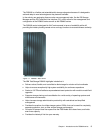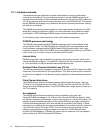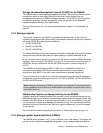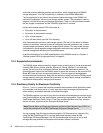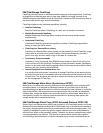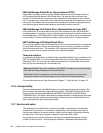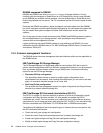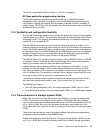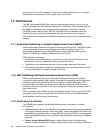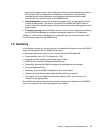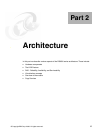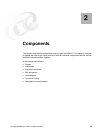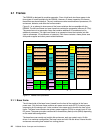Chapter 1. Introduction to the DS8000 series 13
The DS CLI is described in detail in Chapter 11, “DS CLI” on page 231.
DS Open application programming interface
The DS Open application programming interface (API) is a non-proprietary storage
management client application that supports routine LUN management activities, such as
LUN creation, mapping and masking, and the creation or deletion of RAID-5 and RAID-10
volume spaces. The DS Open API also enables Copy Services functions such as FlashCopy
and Remote Mirror and Copy.
1.3.3 Scalability and configuration flexibility
With the IBM TotalStorage DS8000 you are getting the opportunity to have a linearly scalable
capacity growth up to 192 TB. The architecture is designed to scale with today’s 300 GB disk
technology to over 1 PB. However, the theoretical architectural limit, based on addressing
capabilities, is an incredible 96 PB.
With the DS8000 series there are various choices of base and expansion models, so it is
possible to configure the storage units to meet your particular performance and configuration
needs. The DS8100 (Model 921) features a dual two-way processor complex and support for
one expansion frame. The DS8300 (Models 922 and 9A2) features a dual four-way processor
complex and support for one or two expansion frames. The Model 9A2 supports two IBM
TotalStorage System LPARs (Logical Partitions) in one physical DS8000.
The DS8100 offers up to 128 GB of processor memory and the DS8300 offers up to 256 GB
of processor memory. In addition, the Non-Volatile Storage (NVS) scales to the processor
memory size selected, which can also help optimize performance.
Another important feature regarding flexibility is the LUN/Volume Virtualization. It is now
possible to create and delete a LUN or volume without affecting other LUNs on the RAID
rank. When you delete a LUN or a volume, the capacity can be reused, for example, to form a
LUN of a different size. The possibility to allocate LUNs or volumes by spanning RAID ranks
allows you to create LUNs or volumes to a maximum size of 2 TB.
The access to LUNs by the host systems is controlled via volume groups. Hosts or disks in
the same volume group share access to data. This is the new form of LUN masking.
The DS8000 series allows:
Up to 255 logical subsystems (LSS); with two storage system LPARs, up to 510 LSSs
Up to 65280 logical devices; with two storage system LPARs, up to 130560 logical devices
1.3.4 Future directions of storage system LPARs
IBM's plans for the future include offering even more flexibility in the use of storage system
LPARs. Current plans call for offering a more granular I/O allocation. Also, the processor
resource allocation between LPARs is expected to move from 50/50 to possibilities like 25/75,
0/100, 10/90 or 20/80. Not only will the processor resources be more flexible, but in the
future, plans call for the movement of memory more dynamically between the storage system
LPARs.
These are all features that can react to changing workload and performance requirements,
showing the enormous flexibility of the DS8000 series.
Another idea designed to maximize the value of using the storage system LPARs is to have
application LPARs. IBM is currently evaluating which kind of potential storage applications



